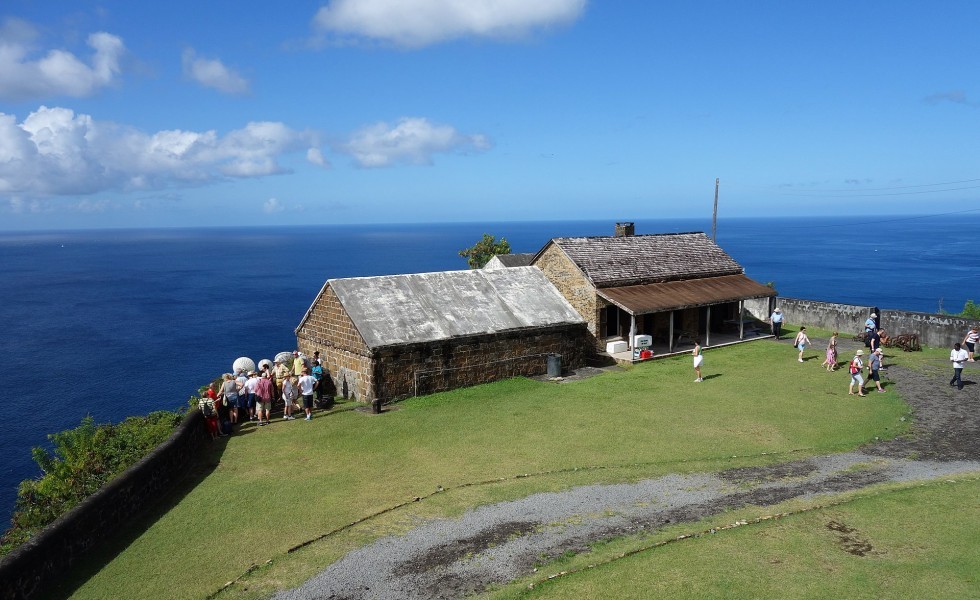Search for cities, countries, lakes and rivers
Saint Vincent and the Grenadines

Saint Vincent and the Grenadines © By Ein Dahmer
Saint Vincent and the Grenadines Sea Temperature
This page provides detailed information about the water temperature in Saint Vincent and the Grenadines. All countries, cities and resorts on the coast. The range of sea temperatures for today. We find every spot where you can swim and tell you what the water temperature is there today and throughout the year.
Current Sea Temperature
27.7°C
minimal
28.1°C
average
28.6°C
maximum
Graph of Sea Temperature Changes in Saint Vincent and the Grenadines Over the Last 60 Days
The Warmest Places on the Seaside in Saint Vincent and the Grenadines Today
The Most Popular Seaside Resorts in Saint Vincent and the Grenadines
Seas and Oceans that Border Saint Vincent and the Grenadines
Water Temperature in Saint Vincent and the Grenadines: General Trends and Swimming Opportunities
Saint Vincent and the Grenadines, an idyllic archipelago in the Caribbean, is renowned for its beautiful beaches and crystal-clear waters. The sea temperature around the islands remains warm year-round, ranging from 26°C (79°F) in the cooler months to 29°C (84°F) in the peak summer season. This consistent warmth makes it an ideal destination for swimming, with comfortable conditions throughout the year, particularly along the sheltered bays and coral reefs.
The islands offer a variety of pristine beaches, such as those on Bequia, Mustique, and Union Island. These beaches are perfect for swimming, with calm, shallow waters that are ideal for relaxation and family-friendly activities. The coral reefs surrounding many of the islands provide excellent opportunities for snorkeling and diving, offering vibrant underwater ecosystems filled with tropical fish, sea turtles, and other marine life. The Tobago Cays, in particular, is a popular spot for snorkeling, with its crystal-clear waters and diverse marine species.
Beyond swimming, Saint Vincent and the Grenadines also offer opportunities for kayaking, sailing, and paddleboarding. The islands’ peaceful waters and scenic landscapes create the perfect environment for exploring by boat, while the rich marine life and clear visibility make it an attractive destination for divers. Whether you’re seeking a relaxing swim in calm waters or an adventurous day of water sports, Saint Vincent and the Grenadines provides a beautiful, tranquil escape for all types of water enthusiasts.
General Information and Geographical Location of Saint Vincent and the Grenadines
Original name of the country: Saint Vincent and the Grenadines
Saint Vincent and the Grenadines is located in Central America. The country is washed by the Caribbean Sea. Saint Vincent and the Grenadines is a small country. To determine the temperature of the water in it, we track only five settlements. Link to Google Maps.
Saint Vincent and the Grenadines Weather
Saint Vincent and the Grenadines have a tropical climate, characterized by warm temperatures, high humidity, and a steady breeze from the trade winds. Average daily temperatures typically range from 75°F to 88°F (24°C to 31°C), with slight variations depending on altitude and season. The dry season, which lasts from December to May, brings sunny weather, lower humidity, and comfortable conditions, making it the most popular time for visitors. The wet season, from June to November, sees increased rainfall, often in the form of brief but intense showers, followed by sunshine.
Being in the eastern Caribbean, Saint Vincent and the Grenadines are occasionally affected by hurricanes during the Atlantic hurricane season, which runs from June to November. However, the islands are located in the southern part of the hurricane belt, meaning direct hits are less frequent than in other Caribbean nations. Despite the seasonal rainfall, the country enjoys consistently warm sea temperatures, ranging from 80°F to 85°F (27°C to 29°C), making it an excellent destination for swimming, sailing, and other water activities year-round. The combination of tropical warmth, refreshing breezes, and lush landscapes makes this island chain a paradise in any season.
Frequently Asked Questions About Saint Vincent and the Grenadines and its Water Temperatures
What is the sea temperature today on the coast of Saint Vincent and the Grenadines?
The sea temperature today on the coast of Saint Vincent and the Grenadines ranges from from 82°F (27.7°C) in Layou to 83°F (28.6°C) in Biabou.
Which seas and oceans border Saint Vincent and the Grenadines?
Saint Vincent and the Grenadines is bordered only by the Caribbean Sea.
How long is the coastline in Saint Vincent and the Grenadines?
According to The World Factbook, the length of Saint Vincent and the Grenadines's coastline is 52 miles (84 km), while the World Resources Institute estimates it at 164 miles (264 km).
What is the best time for swimming and beach holidays on the coast of Saint Vincent and the Grenadines?
In Saint Vincent and the Grenadines, the average monthly water temperature does not drop below 68 degrees Fahrenheit (20 degrees Celsius) in any month of the year.
What is the sea temperature history in Saint Vincent and the Grenadines?
Here are the ranges of sea temperatures in Saint Vincent and the Grenadines by month based on historical data: in January from 75°F (24°C) to 84°F (29°C), in February from 75°F (24°C) to 84°F (29°C), in March from 77°F (25°C) to 84°F (29°C), in April from 77°F (25°C) to 84°F (29°C), in May from 78°F (26°C) to 86°F (30°C), in June from 77°F (25°C) to 86°F (30°C), in July from 78°F (26°C) to 86°F (30°C), in August from 78°F (26°C) to 87°F (31°C), in September from 80°F (27°C) to 87°F (31°C), in October from 80°F (27°C) to 89°F (32°C), in November from 78°F (26°C) to 87°F (31°C), in December from 77°F (25°C) to 86°F (30°C).
